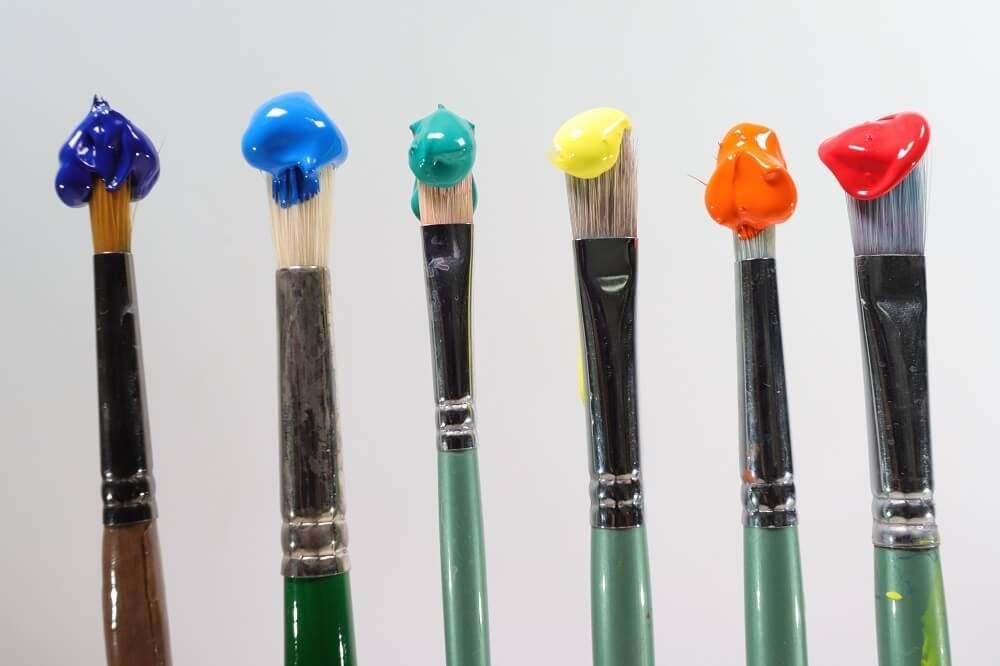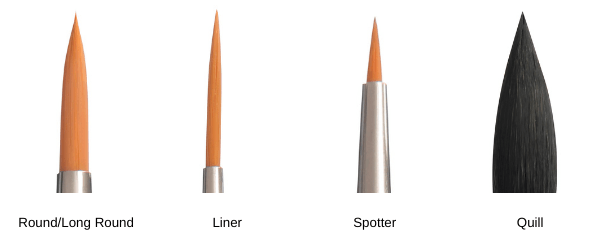
Types of Paint Brushes: A Guide to Choosing the Right Brush Shape
An artist’s paintbrushes are one of the most important tools. Choosing between all the different types of paint brushes for your project can be daunting. With so many different shapes and sizes, it can be hard to know which one to use. Each brush shape and size has a purpose and results in different effects. Practicing with each brush shape to see which kind you prefer is a great place to start! Read below to learn about each type of shape and what they can be used for.
Flat Shapes
Flat shapes are great for filling in large areas of color, painting straight lines, and blending. A few of the most common brushes in the flat family are flat shaders, filbert, angular shader, and wash brushes. This is what we like to use each type for:
• Flat shaders: These brushes are a little longer than chisel blenders and allow you to create a longer stroke. They are great for filling in large areas of color or using the chiseled edge for thin lines.
• Filbert: Filbert brushes are like a flat shader; however, they have a rounded tip instead of a straight one. These brushes are great for creating soft edges. For example, a rose petal or cloud. They work well for blending and creating dry brushed textures as well.
• Angular shader: Angular shaders are perfect for crisp edges and allow for precise control. The angled tip is perfect for blending in tight areas and making thin lines.
• Wash/Glaze: A wash brush is a must-have for creating base coats, applying color to large areas, and broad strokes. Every artist should have at least one in their arsenal.
Round Shapes
Round brushes are an extremely versatile brush to paint with! They’re perfect for detail work and thicker strokes. They come in various shapes such as round, liner, spotter, quill, and long round. Learn more about the different round shapes below:
• Round: Your basic round brush can be a normal round or a long round shape. These brushes are great for small details or filling in large areas depending on how much pressure you apply and the brush size. Larger round brushes (higher numbers) can hold quite a bit of water in the belly of the brush but still end in a fine tapered point. This allows for a variety of strokes and the ability to move from large coverage to tight detail without having to dip back into the paint often.
• Liner: The long hairs on a liner brush allow for consistent thick to thin lines when painting things like vines, tree branches, and foliage.
• Spotter: Spotter brushes are ideal for detail work. You can create very fine and precise lines in miniature paintings.
• Quill: These brushes specifically have a large belly to hold more paint and allow you to create large washes of color.
Types of Paint Brushes in Specialty Shapes
When creating things like grass, fur, or clouds it can help to use a specialty-shaped brush. There are many specialty-shaped brushes, but we’re going to discuss just a few. The following are the most typically used shapes:
• Fan: These brushes are great for blending and softening the edges of paint strokes. You can also use it to dry brush and create hair, trees, grass, and shrubbery.
• Round Blender: Use a round blender when you want to soften an area and blend the colors together.
• Filbert Grainer/Grainer: In this brush, the hairs are thinned and spread apart near the tip to allow for painting fur, grass, cross-hatching, and other textures.
• Mops: Mop brushes are the best for moving low viscosity paints and blending. You can also use them as a soft wash brush to spread the color.

